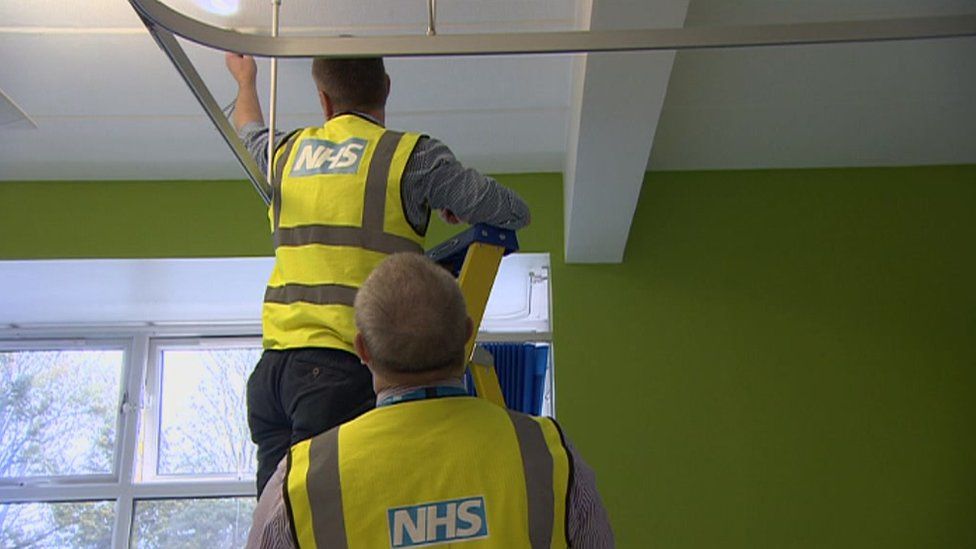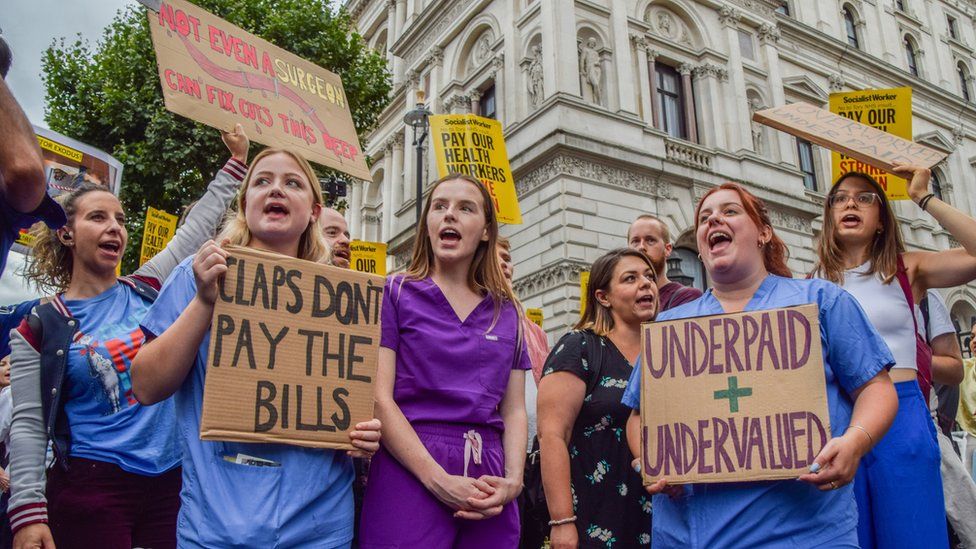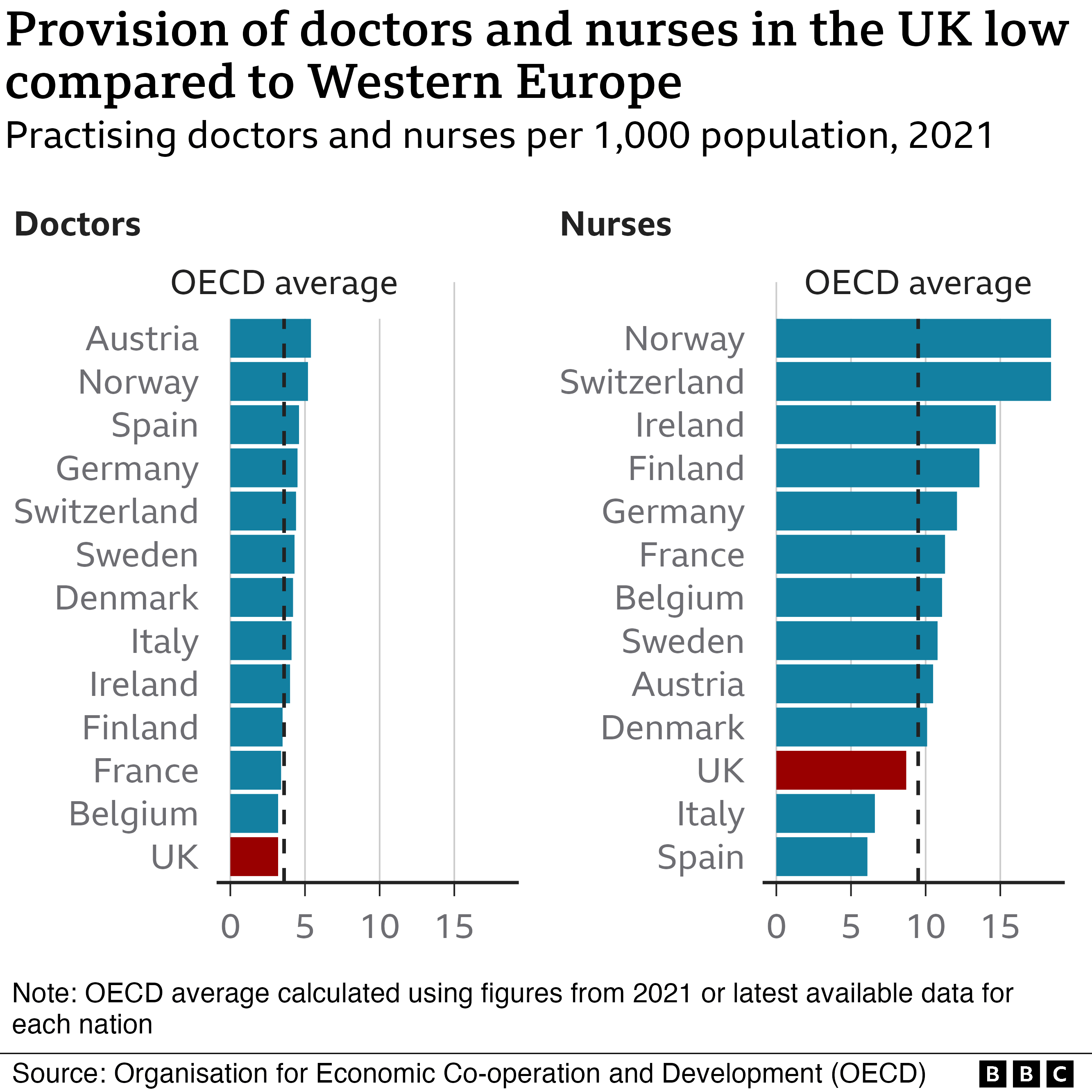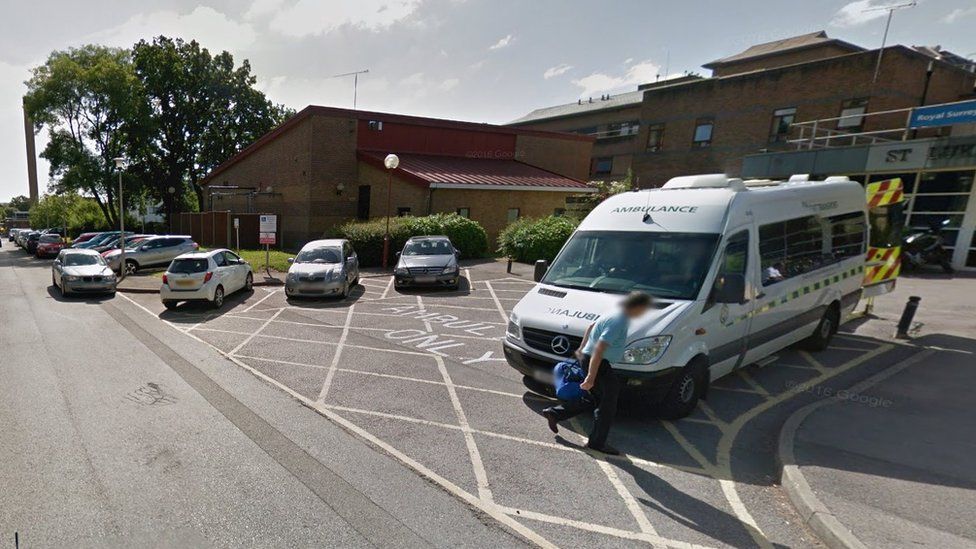Rishi Sunak made a declaration. a strategy to increase the number of NHS employees. He claims that this will give the service a stable foundation for the long term in England. But there are still a lot of unanswered questions despite the prime minister's promise.
The short answer is "yes," but there is a catch. .
The plan is funded for the first five years, but after that, it is assumed that future governments will have the resources to fund the required growth in training spaces for the following ten years.
It is difficult to believe that a new administration would slow down the expansion of the NHS workforce and the education of thousands more physicians and nurses.
But when it comes to public finances, never say never. .
Patients will eventually benefit from increasing the number of clinical staff to the extent that is anticipated in the plan, but staff retention will be more difficult.
The plan's guidelines for boosting morale and keeping employees look a little hazy. If the exodus continues at the same rate as it is, recruitment efforts will be ineffective.
Recruit and retain has long been promoted as the NHS's essential twin-track strategy.
Since the plan had incorporated the recommendations of the majority of experts, health think tanks and charities lined up to applaud it. .
However, part of the enthusiasm must have come from relief that there was finally a workforce plan for the NHS after two decades without anything comparable.
Health think tanks were invited to examine the data and test the model of anticipated patient demand.

There were also assumptions about productivity. The plan is ambitious, according to some of the medical Royal Colleges, and they want to see more specifics.
The idea of medical apprenticeships is radical because employees of other NHS jobs are currently undergoing medical school.
However, it will take some time for this plan's precise workings to be figured out.
Pay is undoubtedly the biggest issue. .
The majority of sizable organizations creating a workforce plan would include a section on appropriate compensation to entice and inspire the best employees. .
That is one thing NHS England's strategy prohibits.

The government controls NHS pay, and ministers make the decisions. Although the majority of the NHS pay disputes have been resolved, the doctors' campaign is far from over as more planned strikes.
Health unions have long argued that raising wages during a period of intense cost of living pressures is the best way to retain staff. .
Senior management has been forced to deal with the fallout from walkouts while remaining neutral in the debate.
When it comes to increasing the number of physicians, nurses, and other medical personnel, the short term answer is no. .
Clinical professionals must undergo lengthy training, and medical schools and universities won't start adding new seats until the fall of 2024.
If there are not enough qualified medical professionals to devote the necessary time to conducting the training, implementation may be slowed down.

Over the next year or so, retention programs designed to lower the number of NHS employees quitting might make a small difference.
But the disgruntled patients who are currently unable to schedule a GP appointment or who are on a protracted waiting list for surgery probably won't notice.
It is commendable to plan to train tens of thousands of healthcare workers well past 2030.
In recent years, there hasn't been anything comparable, only sporadic time-limited initiatives.
However, how will the rest of the NHS be by then? Will it have kept up with the rising cost of illness associated with an aging population?

How much of a difference will technology and AI make? Will the public continue to support the NHS through taxation? Could payment for some services have been implemented?
The hospitals and clinics where the new staff will work and the computers they will use do not have a long-term plan for investment in buildings and IT.
Politicians may be inspired to develop longer-term plans for health funding and reform after the release of a multi-year workforce plan. .
Don't hold your breath, though.








